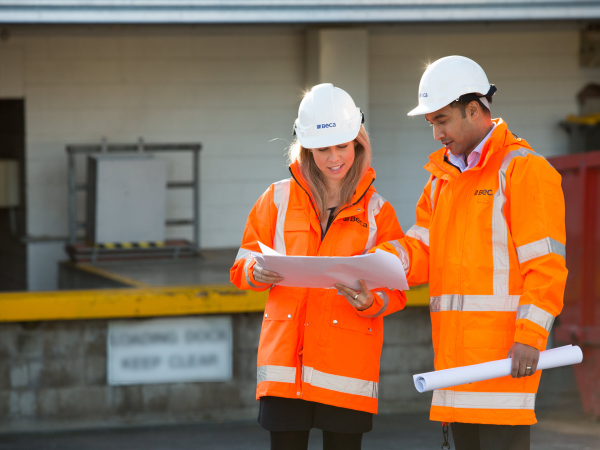From Analogue to Digital Culture
How Digital Twins can remove some of the stumbling blocks to organisations digitising effectively.
One of the hardest aspects of digital transformation is building a digital culture in your team. By democratising data, encouraging pro-digital behaviour and supporting experimentation, digital twins can be a vital tool in helping to accelerate this process.
Organisations attempting digitisation in an analogue culture will often struggle to achieve their expected return on investment. Successful digitisation depends on having employees who are prepared to share their data, codify learnings, and engage readily with digital tools to interpret information, discover meaning and communicate ideas.
Digital twins can be a powerful lever to speed up culture transformation, cutting through many of the traditional barriers to uptake and encouraging pro-digital behaviours.
 |
Stephen Witherden
|
01 |
Democratising data |
Resistance to change will often manifest in a reluctance to use digital tools due to the (often incorrect) assumption that it will be too hard. This will often lead to a wider belief that the entire outcome will fail, resulting in compounded levels of resistance.
The ripple effect when people doubt that they can succeed is that reskilling creates high levels of anxiety, creating longer than expected transitions times and often the rollout will fail outright.
Digital twins can alleviate this type of anxiety and can seed enthusiasm for digital tools by presenting information in a way that is intuitive and easy to consume.
For example, digital twins can consolidate data from multiple sources into a visual representation, accessible through a single portal.
It has the functionality to integrate directly into your enterprise system, distilling a single source of truth for all types of data, thereby providing a level of consistency and currency that is desirable for even the most doubting of stakeholders.

Not everyone has the ability, time, or grit to sift meaning from excel spreadsheets, technical plans, or instruction manuals, but everyone can look at a 3D model. |
| Another application of digital twins allows users to ‘walk through’ a 3D representation of a plant or see a visualisation of a real-time data flow, without the need for specialised software. This opens up new levels of knowledge to non-technical users. Not everyone has the ability, time, or grit to sift meaning from excel spreadsheets, technical plans, or instruction manuals, but everyone can look at a 3D model. Equally, when people are only provided with reading material to communicate what’s happening in a plant or factory, they will often misinterpret the information and/or any actions required. Even if the memo or the email explicitly highlighted the steps to take, there is room for misinterpretation. But when they can see what’s happening, or what needs to change, this provides a tangible and real context which can help individuals grasp the concept more readily. These individuals are therefore more likely to take appropriate and correct action because there is a more accurate understanding. |
Similarly, if a team can have a conversation while looking at an intelligent, well-informed visualisation of a business asset for optioneering purposes – one that can change to show what happens in a series of different options – people will have a greater understanding of what’s being discussed. This creates a much more collaborative environment where individuals offer suggestions and ask better, more informed questions. Additionally, at the end of the session, more people leave that conversation with a clearer understanding of the decisions made and what they need to do to support them. Amid the great resignation, digital visualisations can also prove to be a powerful tool for talent attraction and retention. New entrants to the world of employment are likely to have been immersed in digital solutions in every part of their lives. They are therefore less likely to have experience of learning in the pre-digital world. For these employees, consuming information and learning in a digital way is essential – a necessity rather than a nice to have. |
02 |
Encouraging data sharing & knowledge transfer |
Previously, organisations have transferred knowledge by having experienced people mentor or train the next generation of employees. Today, digital twins can make it easier to capture and codify the institutional knowledge that has been acquired through decades of practical experience – sharing it as needed (on the job) rather than in a training or classroom situation. Plant veterans can step through the digital twin and transfer the information usually stored exclusively in their heads, by noting it on the model: “Replacing this valve requires a crane.” “This plant needs a safety perimeter of at least two metres. If you remove the wall, don’t forget to install fencing.” The benefits of this are twofold: on one side, the company is able to retain key institutional knowledge and information, and, on the other, the senior employee can contribute to the solution, leaving a lasting legacy which will continue to provide valuable insights to young minds long after they have left the company. |
This is how organisations ensure the knowledge and IP of the people who know the Operating Technology environment inside out, remains with the organisation after they leave. Now future technicians planning plant maintenance, upgrades or changes can lean on the collective wisdom and instincts of previous generations. They can add their own knowledge as they learn, dynamically updating the Twin in real-time, as they learn on the job. In this way, a digital twin can become a repository for knowledge, ideas, tips and tricks – a gold mine of the knowledge built and grown over decades of work practice. As an added benefit, experienced people can contribute their knowledge once and then focus on value-adding work, not teaching. |
A digital twin can become a repository for knowledge, ideas, tips and tricks – a gold mine of the knowledge built and grown over decades of work practice |

03 |
Supporting experimentation, collaboration and co-design |
In a high-functioning digital culture, co-design and experimentation take place as business as usual. Agile teams are formed from across the business to problem-solve. People are encouraged to experiment and iterate prototypes.
Digital twins can support all these activities.
Firstly, they take information from vertical operating silos, making it accessible to everyone, everywhere and at any time. Agile teams will have access to data sources, removed from their organisational points of origin.
This encourages teams to stop focusing on point solutions to pain points in their part of the organisation – instead using data to co-design new approaches that solve multiple problems across the whole enterprise.
Secondly, digital twins enable virtual prototyping, acting as a prototype to model what could occur within a physical version when built. This radically reduces costs and increases the speed of experimentation. The lower the stakes, the bolder the ideas and the more likely people are to want to get involved.

04 |
Three essential pro-digital behaviours |
Many digital culture behaviours appear counter-intuitive to some, especially to those experiencing resistance to change. To kick-start your organisation’s journey towards digital twin technology, you could start teaching and rewarding people to:
 |
Share what they know Aim for a collaborative information management culture rather than a protective one. Show people the value of sharing safety and other tips in an easy-to-understand, central location. |
| Tell once, tell many All information updates need to be made in the digital twin. Establish this as best practice. Actively discourage people from writing emails and memos. |
|
| Spread the world The more people adding data or gaining insights from the digital twin, the more valuable it becomes, and the more people use it. Accelerate this virtuous cycle by asking existing users to encourage their colleagues to join the digital twin community. |
ConclusionDigital twin technology can help to promote a digital culture by democratising data insights, assisting knowledge transfer and supporting co-creation and experimentation. These critical capabilities can create the bedrock of your competitive advantage in the digital economy. What more could you ask for if you’re looking for compelling and inspiring reason to make a change? |
Get in touch today |
 |
Stephen Witherden |
 |
Mari Huusko |